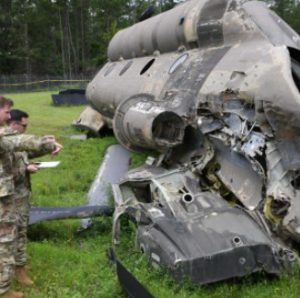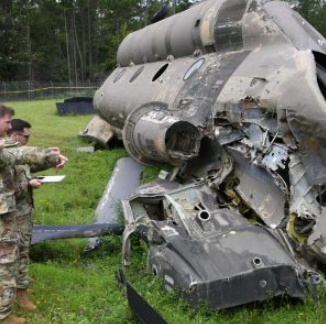
Inside Military Aviation: How Training and Technology Keep Pilots Safe
In the world of military aviation, where precision and split-second decisions can mean the difference between life and death, safety is not a luxury — it is a discipline. Behind every fighter jet that takes to the skies or every cargo plane that completes a mission lies a complex web of training, technology, and teamwork designed to protect the lives of pilots and ensure the success of every operation. Modern military aviation is a stunning fusion of human skill and machine intelligence, where excellence is measured not only in combat victories but in the consistent ability to come home safely.
The Mindset of a Military Aviator
Before a pilot ever sets foot inside the cockpit, their greatest tool is their mind. Military aviation training begins long before flight school, focusing on developing psychological resilience, situational awareness, and decision-making under pressure. Candidates are taught to think calmly in chaos, to anticipate threats, and to operate as part of a disciplined system.
One key element of this mental conditioning is stress inoculation — training that exposes pilots to simulated high-stress environments to teach them how to respond rationally under duress. Whether it’s a combat simulator mimicking missile locks or a mock engine failure during takeoff, these scenarios are designed to rewire instinct. When something goes wrong in the air — a malfunction, turbulence, or enemy engagement — the pilot’s reaction isn’t panic; it’s precision.
“Calm is contagious,” as military instructors often say. In aviation, composure can save lives.
Training: Where Excellence Begins
The training pipeline for military pilots is one of the most rigorous in the world. It often begins with Initial Flight Screening (IFS), where candidates learn the fundamentals of aerodynamics, navigation, and flight controls. From there, they progress through Undergraduate Pilot Training (UPT) or equivalent programs, where they log hundreds of hours both in the air and in simulators.
Simulators have become an essential part of pilot safety. Modern flight simulators replicate aircraft behavior with astonishing realism — from the rumble of the engines to the physics of air resistance and gravity. Pilots can practice combat missions, emergency landings, and midair refueling without any actual danger. Instructors can pause, replay, and analyze performance in real-time, turning every simulated mistake into a lesson that could save lives later.
As training advances, pilots are exposed to instrument flying, formation tactics, and combat maneuvers like the famous “split-S” or “high-G barrel roll.” They learn to read radar signals, manage electronic warfare systems, and coordinate with ground control under immense pressure. Every step is measured, documented, and refined — because in military aviation, excellence is not optional.
Cutting-Edge Cockpit Technology
If the pilot is the brain of the aircraft, then technology is its nervous system. Over the decades, advancements in avionics, sensors, and artificial intelligence have revolutionized safety in the cockpit.
One of the most crucial systems is the fly-by-wire interface, which replaces traditional mechanical linkages with electronic controls. These systems automatically stabilize the aircraft and prevent pilots from exceeding aerodynamic limits. If a pilot makes an overly aggressive maneuver, the system adjusts instantly to maintain safe flight parameters.
Modern jets also feature Helmet-Mounted Displays (HMDs), allowing pilots to see real-time data projected directly onto their visors — speed, altitude, targeting information, and even infrared imagery. This “heads-up” information keeps the pilot’s focus forward, reducing the risk of disorientation.
Equally important are collision-avoidance systems, which continuously monitor nearby aircraft and automatically warn pilots of potential midair risks. Advanced radar systems can detect threats hundreds of miles away, while terrain-following radars allow low-level flight through mountains or valleys without risk of impact.
In newer aircraft like the F-35 Lightning II or the Eurofighter Typhoon, sensor fusion technology integrates data from multiple sources into a single display. Instead of overwhelming pilots with raw information, the system prioritizes what’s critical, helping them make smarter, faster decisions.
Ejection Systems: The Last Line of Defense
Even with all precautions, emergencies can and do occur — and when they do, ejection seats are a pilot’s final safeguard. Modern ejection systems are marvels of engineering, capable of saving lives even when a jet is traveling at supersonic speeds or low altitudes.
For instance, the Martin-Baker ejection seat, used in many Western aircraft, has saved thousands of lives. It works in milliseconds: upon activation, an explosive charge propels the seat clear of the aircraft, a small rocket stabilizes it, and a parachute deploys automatically.
But technology alone isn’t enough. Pilots train extensively in ejection procedures, learning exactly when and how to eject, as hesitation can be fatal. They also undergo water survival, jungle survival, and arctic training — preparing for whatever environment they might land in after escape.
The Human Factor: Crew Resource Management
Despite the sophistication of military jets, one principle remains unchanged: humans make the final call. That’s why modern aviation safety emphasizes Crew Resource Management (CRM) — the art of teamwork, communication, and trust.
Whether it’s a fighter duo executing coordinated maneuvers or a cargo crew transporting troops and supplies, every mission depends on clear communication. Pilots are trained to question, cross-check, and verify each other’s actions, eliminating assumptions and catching potential errors before they escalate.
This culture of safety extends beyond the cockpit. Ground crews, air traffic controllers, maintenance engineers, and command staff all play vital roles. Each contributes to a layered defense against accidents — one built on accountability and professionalism.
Maintenance: The Silent Guardian
Every flight begins and ends with the work of skilled technicians and engineers. Before takeoff, aircraft undergo meticulous inspections: hydraulics, avionics, fuel systems, and control surfaces are all tested for reliability. Even a single loose bolt or wiring fault can be catastrophic, so maintenance teams adhere to military-grade checklists and redundant verification systems.
Post-flight, data collected from onboard sensors is reviewed to detect anomalies. Predictive maintenance — powered by AI analytics — can now identify wear and tear before it leads to failure. This proactive approach has significantly reduced mechanical-related mishaps in modern air forces.
The Future of Pilot Safety
The future of military aviation safety lies in the partnership between humans and machines. Emerging technologies like autonomous drones, AI co-pilots, and augmented-reality training environments are enhancing pilot performance while minimizing risk.
For example, experimental systems now allow AI copilots to manage routine tasks like navigation and threat monitoring, freeing the human pilot to focus on mission strategy. Meanwhile, virtual-reality simulators can reproduce exact battlefield conditions, enabling immersive training that’s safer and more efficient than ever before.
Moreover, biometric monitoring in cockpits is becoming standard. Sensors in pilot helmets can track heart rate, oxygen levels, and fatigue in real-time, warning both the pilot and ground control of potential impairment. This innovation could prevent accidents caused by overexertion or hypoxia — conditions once undetectable until too late.
The Legacy of Safety
Behind every sleek fighter jet and every awe-inspiring aerial maneuver is a philosophy that defines modern military aviation: safety through excellence. It’s a mindset built on preparation, precision, and pride.
Military pilots know that when they take off, their survival depends not just on technology, but on the unseen network of engineers, trainers, and strategists who uphold the system. Every mission completed safely is a victory of collaboration — of human ingenuity meeting mechanical reliability.
In the end, the true measure of a great air force isn’t just its firepower or speed; it’s the commitment to bring every pilot home. And thanks to the relentless pursuit of innovation and the unbreakable discipline of those who serve, the skies have never been safer for those who defend them.

